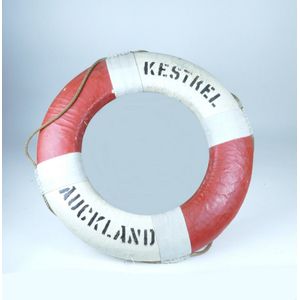
Vintage Auckland Ferry Kestrel Life Ring - 67cm Diameter
A vintage mid 20th century life ring from the Auckland Ferry 'Kestrel', rope stitched to the exterior. Diameter 67 cm
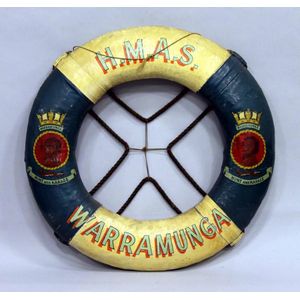
Vintage H.M.A.S. Warramunga Life Ring - 75cm Depth
A vintage H.M.A.S. Warramunga life ring. Depth 75 cm

Shaw Savill Line Life Preserver Hook with Flags
A Shaw Savill line wooden life preserver hook shield shaped with painted flags. Height 55 cm
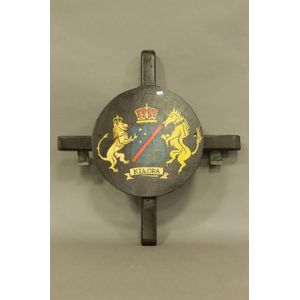
"Kia Ora" Life Preserver Stand with Lion and Unicorn
A painted wooden ship's life preserver stand for 'Kia Ora' with lion and unicorn. Height 80 cm

NZS Co. Durham Life Preserver
A vintage ship's life preserver for NZS Co. Durham, London. Painted blue and white with flags. Diameter 76 cm
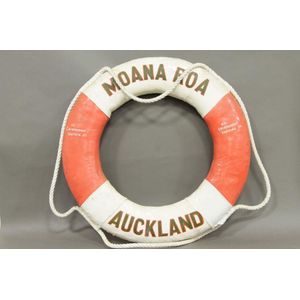
Vintage Life Preserver for New Zealand Government Shipping Co
A vintage ship's canvas over cork life preserver for the New Zealand Government Shipping Co. Moana Roa, Auckland. Painted red, white and black. Diameter 76 cm
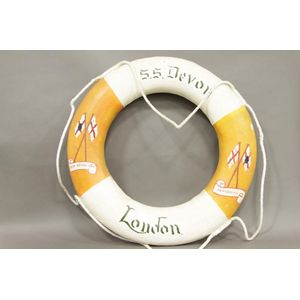
Vintage Life Preserver for SS Devon, New Zealand Steamship Co
A vintage ship's canvas and cork life preserver for the New Zealand Steamship Co. SS Devon, London. Painted yellow, white and red. Diameter 76 cm

Union Steamship Co. Life Preserver
A vintage ship's canvas and cork life preserver for New Zealand Union Steamship Co. Hororata, Plymouth. Painted red, white and yellow. Diameter 76 cm
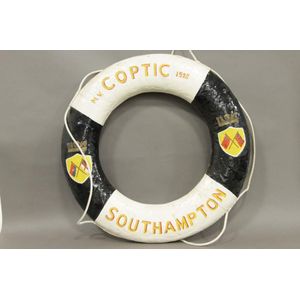
Vintage M.V Coptic Life Preserver
A vintage English ship's painted canvas and cork life preserver for M.V Coptic 1928 south Hampton. Crown crests with shields and flags. Diameter 76 cm
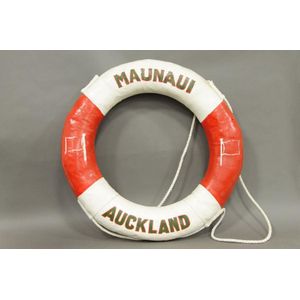
Maunaui Auckland Life Preserver - Vintage Ship Artifact
A vintage ship's painted canvas and cork life preserver for the Maunaui Auckland. Painted red and white. Diameter 76 cm
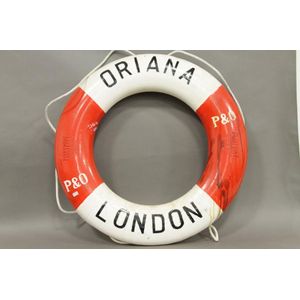
Vintage P&O Oriana Penny Buoy Life Preserver
A large vintage Penny Buoy life preserver for the P&O line Oriana, London. Painted red and white. Diameter 78 cm
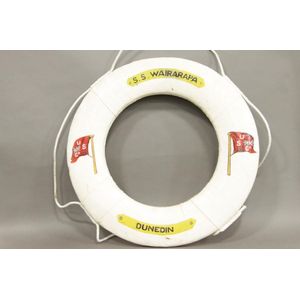
Vintage SS Wairarapa Ship Life Preserver
A large vintage ship's life preserver for Union Steam Ship SS Wairarapa, painted and with rope edge. Diameter 78 cm
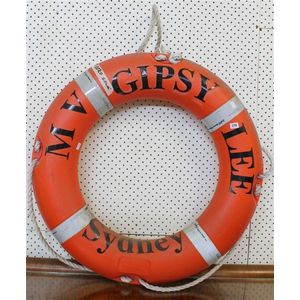
 Loading more...
Loading more...